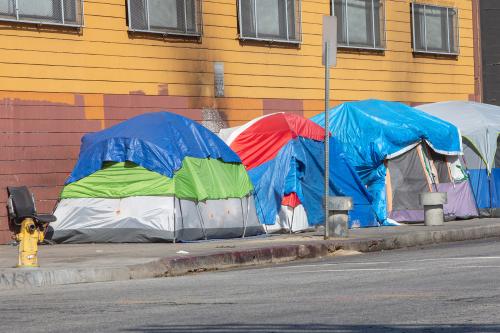Findings
This report examines the link between income inequality and new housing construction in various metropolitan areas. Using data from the Census and Neighborhood Change Database on 215 metropolitan areas, the analysis compares trends between economically distressed metropolitan areas (those that experienced little or no population or economic growth) and non-distressed metropolitan areas. It finds that:
Between 1960 and 2000, the average rate of new housing construction per decade was about six times the rate of population growth in distressed metropolitan areas, a ratio far greater than in any other type of metropolitan area.
In contrast, metropolitan areas experiencing the most rapid population growth had an average rate of new construction that was only about 1.5 times their population growth rate.
Between 1970 and 2000, both distressed and non-distressed metropolitan areas with rapidly growing income inequality experienced rapidly growing residential segregation by income.
Income segregation refers to the sorting of rich families into rich neighborhoods and poor families into poor neighborhoods. Oshkosh, WI, which had the third smallest increase in income inequality between 1970 and 2000 among the 47 distressed metropolitan areas, had the third smallest increase in income segregation. Flint, MI, had the greatest increase in income inequality and the second greatest increase in income segregation among the distressed areas.
In distressed metropolitan areas between 1970 and 2000, rising income segregation was associated with excess housing construction. In non-distressed metropolitan areas, there was no relationship between income segregation and excess housing construction. Excess housing construction, defined as that beyond what would be predicted on the basis of population growth, often results in the abandonment of older housing in the urban core.
Rising income inequality and neighborhood income segregation accounted for 16 to 50 percent of new construction in distressed metropolitan areas between 1970 and 2000.
The percentage of new housing construction in distressed areas that resulted from increasing income inequality and income segregation since 1970 was 16 percent in 1980, 39 percent in 1990, and 50 percent in 2000.
Policymakers in economically distressed metropolitan areas who are concerned about the effects of overbuilding and income segregation—such as the decline of older cities and inner suburbs and the perpetuation of poverty—should be concerned about income inequality. Policies that reduce income inequality can help reduce overbuilding and income segregation in distressed areas.



